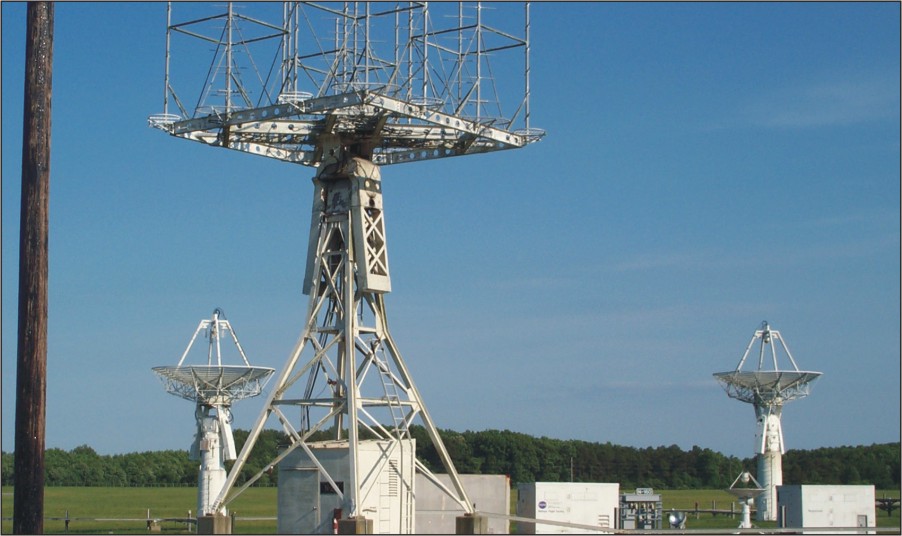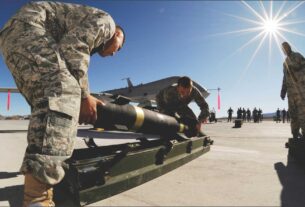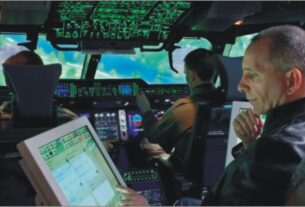A Network Centric Warfare system and a system of protecting it from electronic penetration and disruption are separate but concomitant requirements.
Even though the Indian Army’s Network Centricity is as yet incomplete the method of protecting it through electronic counter measures is well in place in all the three Services. The Army has the Samyukta, the Navy the Sangraha and the Indian Air Force the Tempest handle the protection of their respective networks.
The comment on the incomplete nature of the NCW system arises from several indicators that show that the SATHI hand-held digitized tablet is not available at the full Corps strength where its prototype was being tested by the Indian Army. Army’s objection to the range of the equipment has left the whole system hanging in limbo.
Also a recent article written by Lieutenant General Rajesh Pant, Commandant, Military College of Telecommunication Engineering and Colonel Commandant Corps of Signals and Colonel Dheeraj Kaushal, FCE, Military College of Telecommunication Engineering Mhow published in April states: Today the Indian Army is on the verge of replacing a large number of existing ICT systems with the state – of – the -art.
Indigenous solution
The Army’s’ old workhorse network is called the Army Radio Engineered Network (AREN). This indigenously conceived system for the field formations was launched more than three decades ago and is on the verge of being replaced by the Tactical Communication System (TCS). Valued at more than Rs 10,000 crore the TCS is India’s first “Make” program.
Government owned Bharat Electronics Limited (BEL) in the public sector will join the race for prototype development with a Ministry selected Special Purpose Vehicle (SPV) Company led by L&T; the SPV includes Tata Power SED and HCL Infosystems Limited. It is the first-ever program wherein three major private sector companies have formed a consortium together to provide indigenous solution for strategically important acquisition of the Army.
As is the trend worldwide, TCS is envisaged to have a large percentage of COTS technologies, albeit customized and hardened for usage by the Army in the tactical battlefield. It is envisaged to use state of the art technologies like mobile adhoc networks and emerging 3G/4G cellular technologies.
As a paradigm switch, TCS would link the forward most soldiers to the high capacity national networks and carry critical voice, video and data for the digitized battlefield of the future.
It needs to be pointed out that the reference to the link to the forward most soldier is to the SATHI hand-held computer with voice, video and SMS applications that was tested in Jammu and Kashmir based on a qualitative staff requirement that was contrary to the experience of troops on the ground during the Kargil war of 1999 when signal attenuation was experienced with communications equipment with the Indian Army.
The article adds: “The Army is also set to transform its backbone network called Army Static Switched Communication Network (ASCON). ASCON was evolved to integrate the telecommunication infrastructure of the hinterland with the tactical communication networks. It is a digital, fully automated, secure, reliable communication system based on microwave radio, optical fiber cable and satellite equipment. Value added Services such as fax, telex, data transfer were also available to defence users on this network.
Currently the existing ASCON network is being expanded and undergoing a technology upgrade. Simultaneously, BSNL is developing a Pan India backbone that shall be fully owned by the Army. Called project NFS (Network for Spectrum) the OFC network will be laid over 60,000 km to provide connectivity for 129 Army, 162 Air Force and 33 Naval stations. It is being built by BSNL in lieu of the commercial mobile spectrum vacated by the Defence services.”
Basically what this indicates is that all this is either in the process of fruition or in the development stage and still far from operational deployment. This indicates the kind of gaps that exist in the Network Centric Warfare system.
Nonetheless, whatever that exists comes within the purview of the respective equipment created by the DRDO for the security of communications within each Service and between them.
Securing network
Samyukta is a land-based mobile system. The integrated electronic warfare system Samyukta Communication and Control block has the unique distinction of incorporating a very wide bandwidth of frequencies from high frequency (HF) to millimeter wave (MW) for reconnaissance, direction finding, and position fixing, listing, prioritizing and jamming adversaries’ emissions.
Deployed since 2005, the system ensures dominance over the electro-magnetic spectrum which essentially is the medium for electronic intelligence and signals intelligence gathering. It facilitates the scanning of enemy electromagnetic emissions and provides the means to jam enemy surveillance signals and voice and radar signals while ensuring one’s own signals are protected from interception, jamming and distortion by the enemy.
This is done by several different means ranging from encryption, frequency hopping and highs speed burst transmission which the enemy is unable to intercept.
Samyukta, the largest electronic warfare project so far in the country, has been built jointly by DRDO, Bharat Electronics Ltd, Electronics Corporation of India Ltd and Corps of Signals of the Indian Army. In the fully deployed state the Samyukta system consists of 145 vehicles carrying all the technical means required to sniff the ether and extract nuggets of information about enemy plans, intentions, deployment and capabilities.
The Indian Air Force has the Tempest electronic counter measure suite carried aloft in a pod. The system created by the DRDO uses noise, continuous wave and pulse repeater for jamming enemy signals and triggering the onboard radar warning receiver. The response to imminent threat from surface-to-air and air-to-air missiles is the release of chaff and flare decoys. The DRDO has upgraded the system and named it Tranquil which is fitted on to the Sukhoi-30 aircraft.
The buzz about the future is that the Defence Aeronautics Research Establishment is working on a fourth generation electronic warfare jammer that uses a powerful processor, a radar warning receiver, missile approach warning system and an active barrage jammer with Digital Radio Frequency Memory device and multiple gallium Nitride GaN transponders as its emitters.
According to DARE when ready it will enable the fighters to jam enemy communications, multiple radars and data links of fighters, AWACS and BVRAAMs rendering them useless. Besides traditional home-on-jam missiles that can switch on to passive mode are less effective against this system because they are mostly designed against noise jamming.
The Navy’s Sangraha project envisaged the creation of five types of electronic warfare suites for its surface vessels, aircraft/helicopters and submarines. Development of all five types of electronic warfare (EW) systems have been completed and demonstrated to the users. Field evaluation of the systems for airborne platforms is in various stages of evaluation and that for the submarine platform, has been completed successfully. Navy required two systems for their submarines-one has been delivered and second is nearing completion.
In the context of electronic warfare it is generally felt that the software prowess of the country’s private and academic sector can also be utilized by the defence sector, as a large chunk of EW is based on the software component.
There is also a felt need to integrate tri-service EW systems namely Samyukta (Army), Sangraha (Navy) and Tempest (Air Force) for information sharing and collaborative action.
Dr APJ Abdul Kalam during his Presidency had inaugurated the national electronic warfare test range at Hyderabad. He had said it will be appropriate for faster evaluation and delivery of high performance systems. “In view of our Nuclear Doctrine of ’no first use,’ it is essential to study how synchronized action between electronic warfare system of the army – Samyukta, naval electronic warfare system Sangraha and air force electronic warfare system Tempest-can prevent the entry of special warheads in our territory.”
That is the last word on the subject.





